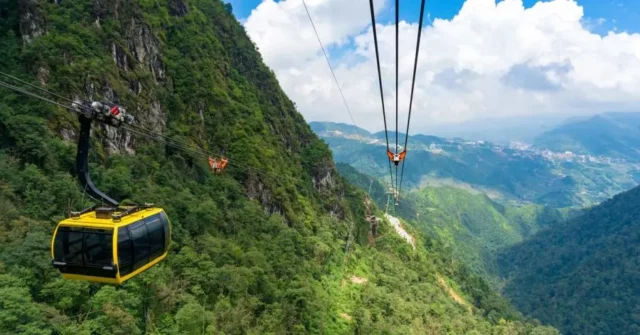Instead of being a transit area, Cartago has the potential to attract thousands of tourists and with it, generate wealth and more employment in the former capital of the country. That is why, in the company of companies, hoteliers, academics, students and representatives of the sector, the project “Tourist Ring of the province of Cartago and Los Santos” was launched.
It is an initiative that aims to exploit the natural, cultural, gastronomic and historical attractions of the province. And it is that there are regions -that although they do not belong to Cartago- are a jewel to discover, such as the area of Los Santos, where you can fish for trout, observe exotic birds such as the quetzal, camp and visit high mountain trails.
Through field work that is already 60% complete, students, graduates and professionals from the Tecnológico de Cartago are identifying tourist areas and thereby consolidating a proposal. The project, with the support of 22 institutions, seeks to promote all local enterprises related to tourism and reactivate the economy of the region, as explained by Mariam Álvarez, coordinator of the Technical Commission of the Tourist Ring of the Province of Cartago and Los Santos. “The goal is to generate a common agenda, that is, all these institutions that have an impact in Cartago and Los Santos, how can we come together to develop economic activity focused on tourism activities in the communities and promote environmental development”, said Álvarez.
The Central canton, Oreamuno and Paraíso in Cartago; as well as León Cortés, Tarrazú and Dota are the communities that would benefit in the medium term with the information collected by the project. Although the idea arose in 2015, it is not until 2020 that the strategy begins to be articulated by all the participants, identifying all the potential tourist offers.
At this time, they have started contacts to incorporate the Costa Rican Tourism Institute (ICT) in the process and “polish” the strategy, so that all the tourist information collected reaches all the actors involved. “We have achieved a much stronger alliance with the ICT and we are trying to generate a cantonal development plan, at this moment we are piloting at the Cartago level, to establish this development plan”, added Álvarez.
Natural attractions such as volcanoes, valleys, rivers and lagoons, as well as gastronomy, bird watching, the culture of the towns and rural alternatives, are part of the tourist offer. The lodging offer is another of the analyzes they are currently working on, since the province receives visits from tourists that do not exceed 24 hours, that is, they visit specific destinations and leave the area in a few hours. Hotels, cabins, inns and chalets are part of the lodging offers offered by places like Orosi, Paraíso and Cachí, but that must be expanded so that the tourist not only considers the province as a gastronomic offer, but also invites them to spend the night in the zone.
During the 3 years that they have been promoting the project, they have invested some ¢23 million. However, they depend on financial sustainability to consolidate it, so they need financial resources from other sources to speed up the strategy process.

This work also makes visible the need for professionals in this field, who carry out all analyzes to bring the information that businesses need to grow as true tourism offers at the national level. “The economic activity that feeds us as a country is tourism, but at this moment there is little visibility of the tourism professional in the field of management and planning, there are professionals who graduate with high knowledge, the country and the province need them, even they migrate from Cartago to other provinces and countries”, said Álvarez.
State universities, Chambers of Tourism, local governments, the National Learning Institute (INA) and other public and private organizations make up the group that hopes to boost the tourist offer of Cartago and Los Santos in the medium term. The project was recently presented to the Tourism Commission of the Legislative Assembly with the intention of having new allies that allow this process to be carried out in an accelerated manner.

